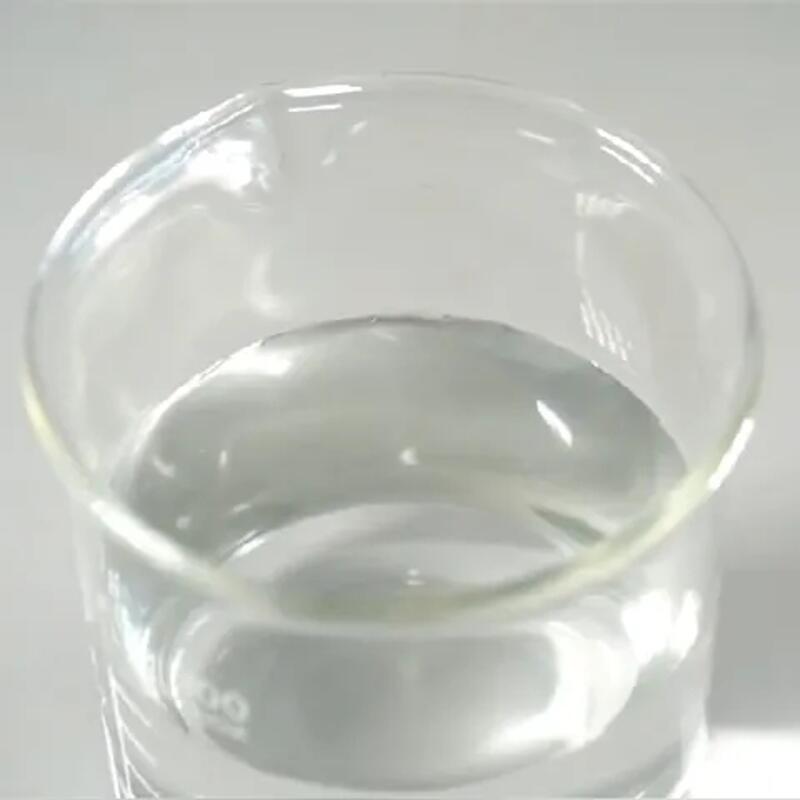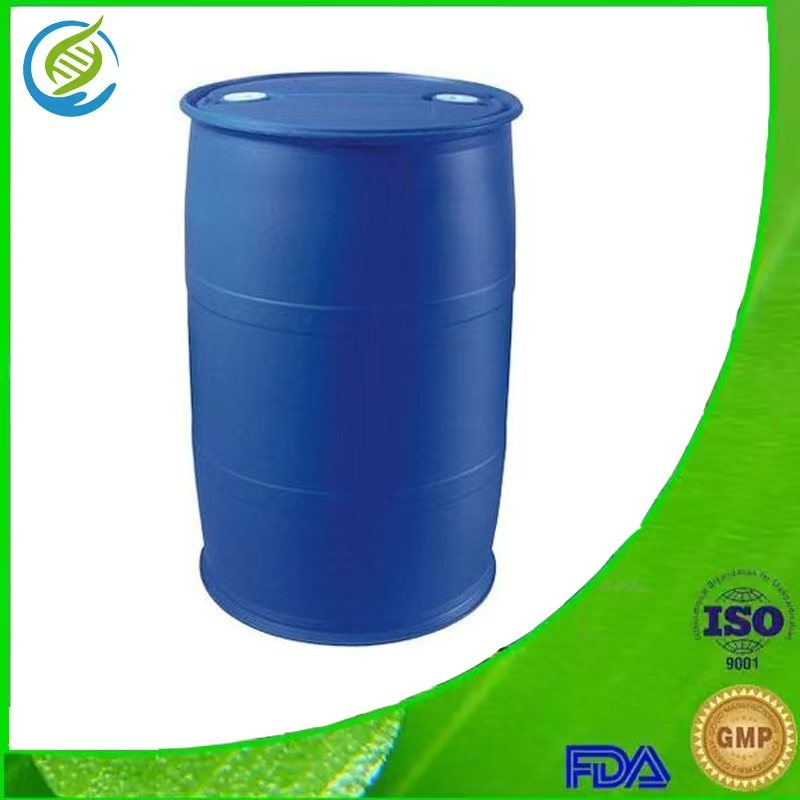-
Categories
-
Pharmaceutical Intermediates
-
Active Pharmaceutical Ingredients
-
Food Additives
- Industrial Coatings
- Agrochemicals
- Dyes and Pigments
- Surfactant
- Flavors and Fragrances
- Chemical Reagents
- Catalyst and Auxiliary
- Natural Products
- Inorganic Chemistry
-
Organic Chemistry
-
Biochemical Engineering
- Analytical Chemistry
-
Cosmetic Ingredient
- Water Treatment Chemical
-
Pharmaceutical Intermediates
Promotion
ECHEMI Mall
Wholesale
Weekly Price
Exhibition
News
-
Trade Service
The experience of laryngeal mask in Xiao Wuxue (3) The laryngeal mask in those textbooks ~ the classic laryngeal mask in the ninth edition of Miller Anesthesiology (LMA North America, San Diego, California) is the most widely used and well-researched glottis The upper airway device, which is the prototype of the perilarynx sealing tool
.
The original version of the classic laryngeal mask (cLMA) consists of an oval ventilation mask made of silicone with an inflatable cuff placed in the hypopharynx to form a seal around the periglottic tissue (Fig.
44.
15)
.
The ventilation catheter comes out of the mouth from the ventilation mask and has a standard 15 mm connector to the anesthesia machine loop or to the breathing bag
.
A sealing ring surrounds the throat inlet, allowing oxygen and inhalation anesthetic delivery under spontaneous breathing and positive pressure ventilation with a maximum pressure of 20 cmHO
.
The classic laryngeal mask can be reused up to 40 times and is available in sizes 1 (neonatal) to size 6 (adult, >100 kg)
.
The LMA Classic Excel is an improved version with design features for endotracheal intubation, including an epiglottis lift, a large-bore ventilation catheter, and a detachable connector
.
LMA Unique is the single-use version of cLMA, which is made of polyvinyl chloride (PVC) or silicone, due to its lower price and maintenance costs, and a focus on avoiding cross-contamination, infection transmission known to reuse medical devices Risks are popularized
.
Available in both reusable and single-use formats, the LMA Flexible has a flexible, kink-resistant ventilation tube so that the ventilation tube can be bent away from the surgical area during head and neck surgery
.
In order to achieve a better effect when placing the laryngeal mask, the laryngeal mask manufacturer recommends placing a relatively large laryngeal mask as much as possible.
The size 5 laryngeal mask is used for ordinary adult men, and the size 4 laryngeal mask is used for ordinary adult women.
of airtightness
.
The use of an undersized laryngeal mask to achieve tightness results in over-inflation of the cuff, which predisposes the patient to oropharyngeal-related complications and nerve damage
.
Laryngeal mask size selection that is too small has also been shown to be associated with failure of laryngeal mask placement
.
However, a larger size laryngeal mask is associated with a higher incidence of sore throat, so a smaller size may be more appropriate when inserting the mask to maintain spontaneous breathing is planned
.
Laryngeal mask manufacturers' guidelines for laryngeal mask placement are summarized in Figure 44.
16
.
Adequate depth of anesthesia for laryngeal mask insertion can be achieved with propofol or sevoflurane, or in combination with short-acting opioids such as fentanyl, alfentanil, and remifentanil to aid in mask placement and reduce coughing , nausea, and incidence of laryngospasm
.
Before inserting the mask, the cuff should be evacuated and the back of the mask should be lubricated with a water-based lubricant
.
Once the laryngeal mask is in place (Fig.
44.
16), inflate the cuff with the minimum effective volume of gas to a target cuff pressure of 40 to 60 cmH2O
.
For accurate mask placement, the mask should not be secured or connected to the anesthesia line until the cuff is inflated
.
The proper position of the laryngeal mask is determined by appropriate positive pressure ventilation, detection of carbon dioxide waveform, auscultation, and the presence of audible leaks by limiting the inspiratory pressure to 18 to 20 cmH2O
.
Once the proper position of the mask is confirmed, a roll of gauze block is placed as a tooth pad, and the mask is held in place with tape
.
Laryngeal mask manufacturers describe several improvements to the recommended laryngeal mask insertion technique, including the thumb insertion method
.
If intraoperative N2O is used, the cuff pressure should be monitored regularly
.
Cuff pressure may exceed the recommended threshold of 60 cmH2O due to diffusion of N2O into the cuff
.
Immediate ventilation difficulties after placing the laryngeal mask may be due to the downward folding of the epiglottis
.
The up-down method described by Dr.
Brain may solve this problem, which is to withdraw the laryngeal mask 2 to 4 cm and then reinsert it without deflating the cuff
.
Head back and laryngeal mask repositioning may also improve ineffective ventilation
.
If these measures do not resolve the problem, it may be necessary to replace the mask with a different model
.
Laryngeal mask ventilation is almost impossible for laryngospasm and bronchospasm caused by insufficient depth of anesthesia; administration of local, inhaled, or intravenous anesthetics can help resolve this problem
.
Although a direct laryngoscope is not necessary, it can help place the mask in place
.
Serious complications from laryngeal mask use are relatively rare
.
More commonly, minor lesions of the mouth, pharynx, and larynx occur, which manifest as dryness or pain in the throat
.
The incidence of sore throat is 10% to 20%, which is related to high cuff pressure and large size of the laryngeal mask
.
More severe oropharyngeal injuries, such as uvula injury and pharyngeal necrosis, have also been reported
.
Injuries to the glossopharyngeal, hypoglossal, and recurrent laryngeal nerves have also been reported
.
These can recover on their own within weeks or months
.
Predisposing factors for these complications include high cuff pressure (often due to N2O use), use of an undersized laryngeal mask, and a non-supine position
.
LMA ProSeal (PLMA) The LMA ProSeal (PLMA, LMA North America, San Diego, CA) is a reusable second-generation supraglottic airway tool that includes a rear-mounted cuff
.
This improves tightness around the larynx and allows positive pressure ventilation up to 30 cmH2O
.
The PLMA incorporates a gastric drainage tube
.
Gastric drainage tubes allow passage of orogastric tubes and drainage of gastric reflux contents away from the airway, effectively isolating the respiratory and gastrointestinal tracts
.
Additional devices include an integral dental pad and softer cuff
.
The procedure for placing PLMA is similar to that of cLMA, but requires a deeper depth of anesthesia
.
Use of an appropriate introducer facilitates PLMA placement
.
As with cLMA, the cuff pressure should not exceed 60 cmH2O
.
Once the laryngeal mask is in place, the assessment of the proper position of the mask is done with positive pressure ventilation
.
Sufficient tidal volume can be obtained at a reasonable peak inspiratory pressure, and air leakage will occur when the airway pressure exceeds 20 cmH2O, and the carbon dioxide waveform shows normal
.
Another test to confirm the proper position of the laryngeal mask and the separation of the airway from the gastrointestinal tract is to apply a layer of water-soluble gel (<5mm) to the mouth of the drainage tube
.
Positive pressure ventilation and compression of the suprasternal fossa cause a small up and down movement of the gel
.
The ease of passage of the gastric tube through the gastric drainage tube also justifies the proper placement of the laryngeal mask
.
LMA Supreme ( SLMA ) SLMA is a second generation supraglottic airway tool based on the PLMA design for single use
.
Similar to the PLMA, the SLMA has a modified cuff to allow higher peak airway pressures, a drainage tube to allow the passage of a gastric tube, and an integral tooth pad (Fig.
44.
17)
.
A fixation handle can provide visual guidance for the selection of the appropriate SLMA size (the handle should be 1 to 2.
5 cm above the upper lip).
The mask is placed more tightly around the larynx
.
Although not clinically proven, evidence suggests that second-generation supraglottic airway tools such as PLMA and SLMA can reduce the risk of aspiration of gastric contents
.
This property, combined with good airway tightness and allowing for high peak airway pressures, allows supraglottic tools to be used in a variety of situations where cLMA may not be suitable, such as non-supine (eg, lateral or prone), laparoscopic Surgery (such as cholecystectomy or gynecological surgery) and obese patients
.
There are also reports of successful routine use of SLMA for cesarean section in fasting, non-obese patients
.
The new generation of laryngeal mask LMA Protector is a second-generation supraglottic airway tool made of all-silicone
.
The LMA Protector has built-in cuff monitoring technology that continuously monitors the pressure inside the cuff, and can change the color of the indicator band based on temperature, N2O, and airway activity, reminding the operator to pay attention to changes in cuff pressure, allowing the operator to The cuff pressure was maintained at 40-60 cmH2O
.
The design of the LMA Protector allows for the drainage of gastric contents away from the airway and suction of gastric contents in the event of reflux
.
Its large diameter allows the passage of standard-sized endotracheal tubes (see Endotracheal Intubation with Supraglottic Airway Tools)
.
The LMA Gastro is a second-generation, disposable silicone supraglottic airway tool designed for use in upper gastrointestinal endoscopic procedures that provides access to the endoscope while protecting the airway
.
Other Laryngeal Mask Sealed Airways Over the past 15 years, a variety of supraglottic airway tools have been produced by a number of manufacturers, including those designed for the cLMA-based perilaryngeal seal
.
Because the term LMA is a protected trademark, these tools refer to laryngeal masks
.
Each tool has its own unique characteristics
.
These features give each tool its own specific advantages
.
While this chapter cannot provide an exhaustive description of every commercially available laryngeal mask, some unique features are worth mentioning
.
Some laryngeal mask design features address the high pressure of the cuff, which can lead to oropharyngeal complications and nerve paralysis, and improve tool placement
.
The series of laryngeal masks produced by AES (Black Diamond, WA) have a cuff pilot valve (CPV) for continuous monitoring of cuff pressure
.
The Air-Q SP (Cookgas LLC, St.
Louis, MO; distributed by Mercury Medical, Clearwater, FL) has an auto-pressurizable cuff that also compresses the cuff when positive pressure ventilation is used
.
This eliminates the need for an inflation tube and eliminates the possibility of hyperventilation of the cuff
.
Deflating the laryngeal mask cuff to a positive end-expiratory pressure (PEEP) level during expiration reduces total mucosal pressure during anesthesia, thus potentially reducing cuff pressure-related complications Rate
.
Pre-shaped uncuffed anatomically sealed airways Pre-shaped uncuffed anatomically sealed airways are uncuffed and these products provide airway sealing through an anatomically pre-shaped design
.
Their advantages include simple insertion and placement, and no need to inflate the cuff
.
The SLIPA laryngeal mask (Curveair, London, UK) is the first generation of anatomically pre-shaped uncuffed airways containing a cavity to collect reflux fluid and prevent reflux aspiration
.
Other uncuffed products such as i-gel (Intersurgical Inc.
, Wokingham, Berkshire, UK) and Baska laryngeal mask (Strathfield, NSW, Australia) are also included in this category
.
Morgan Anesthesiology 5th Edition Supraglottic Airway Device The supraglottic airway device can be used in patients with spontaneous or machine-controlled breathing during anesthesia, and as an auxiliary endotracheal device for mask ventilation or failure of endotracheal intubation Cannulated tubing
.
All supraglottic airway devices have tubing connected to the breathing circuit or balloon and to a hypopharyngeal device that seals and directs airflow to the glottis, trachea, and lungs
.
In addition, these airway devices are able to effectively seal the esophagus to varying degrees, reducing flatulence, and there are various sealing devices that prevent gas from escaping from the mouth, some of which are equipped with gastric suction ports
.
None of the supraglottic airway devices can prevent aspiration pneumonia as well as a cuffed, precisely positioned endotracheal tube
.
Laryngeal mask The laryngeal mask consists of a tube with a thicker diameter, the proximal end of which is a standard 15mm connection port for connecting to the breathing circuit, and the distal end is connected to an oval balloon that can be inflated through a guide tube
.
The degassing bladder is lubricated and inserted blindly into the hypopharynx.
Once the bladder is inflated, a low pressure seal is formed around the entrance to the larynx
.
Insertion of a laryngeal mask requires slightly greater depth of anesthesia and muscle relaxation than insertion of an oropharyngeal airway
.
Inserting the laryngeal mask is straightforward (Figure 19-11), but attention to some details can help improve success (Table 19-2)
.
The ideal location of the laryngeal mask balloon is the base of the tongue above, the piriform fossa on both sides, and the upper esophageal sphincter below
.
If the esophagus is located within the rim of the laryngeal mask balloon, gastric distention and reflux is most likely
.
Anatomical variation prevents the mask from functioning adequately in some patients, but if several attempts to insert the mask do not result in a good fit, most physicians will need to replace the mask with a larger or smaller size
.
The laryngeal mask can be taped to the face
.
The laryngeal mask partially protects the larynx from oropharyngeal secretions (rather than gastric reflux) and must be retained until the patient's airway reflexes recover, that is, the patient can be seen coughing and exhaling before extubation
.
Laryngeal masks are available in many different sizes (Table 19-3)
.
The laryngeal mask provides an alternative to face mask and endotracheal tube ventilation (Table 19-4)
.
Relative contraindications include patients with pharyngeal lesions (eg, abscesses), pharyngeal obstruction, full stomach (eg, pregnancy, hiatal hernia), or low lung compliance (eg, restrictive airway disease) requiring peak pressures greater than 30 cmH,
O.
The laryngeal mask was previously avoided in patients prone to bronchospasm or high airway resistance, but new evidence suggests that because the mask does not enter the trachea, bronchospasm is less likely than a tracheal tube
.
It is clear that the laryngeal mask will not replace the tracheal tube, but its simplicity of operation and high success rate (95% to 99%) make the laryngeal mask very useful in patients with difficult airways (inability to ventilate and intubate).
Useful first aid measures
.
Laryngeal masks have also been used in the passage of intubation >
.
There are several modified laryngeal masks that allow easier placement of larger tracheal tubes with or without a fiberoptic bronchoscope
.
If the airway needs to be protected while the patient is awake, a laryngeal mask can be inserted under topical anesthesia and bilateral superior laryngeal nerve block
.
Different types of laryngeal masks include: ProSeal laryngeal mask; has a tube that can be inserted for gastric decompression I-Gel laryngeal device: uses a gel-like occluder instead of an inflated cuff Fastrach intubated laryngeal mask: is designed to facilitate endotracheal intubation with a laryngeal mask CTrach laryngeal mask; there is a display screen connected to the laryngeal mask to facilitate endotracheal intubation sore throat is a common side effect of supraglottic airway device use and has been There have been reports of damage to the lingual, hypoglossal, and recurrent laryngeal nerves
.
Appropriate size, avoiding over-inflation of the cuff, and gentle jaw movement during placement can reduce such injuries
.
The previous link is about the experience of laryngeal mask in Xiaowu school (1) The status of the laryngeal mask and the experience of the history of Xiaowu school (2) Those who have a high value and a variety of laryngeal masks~







